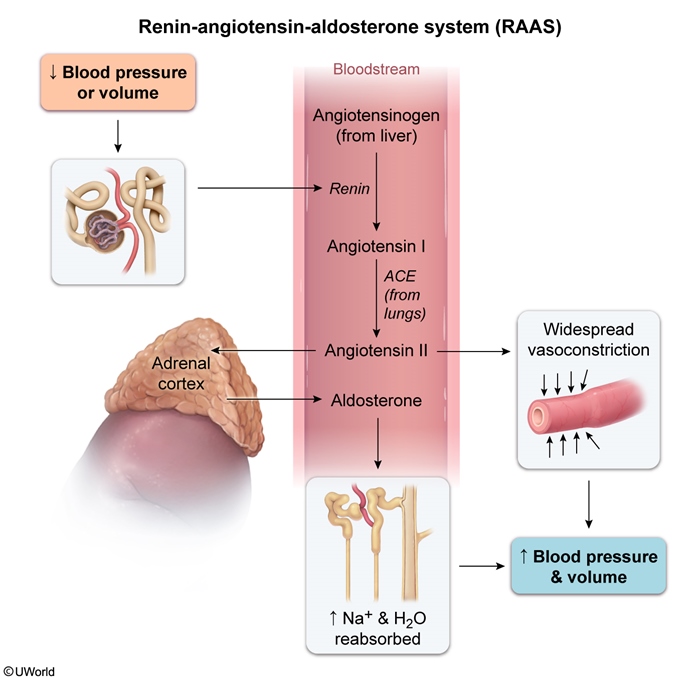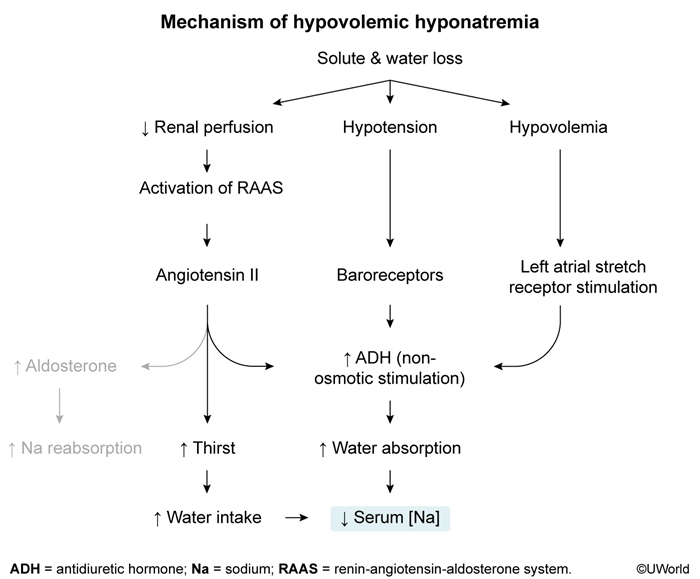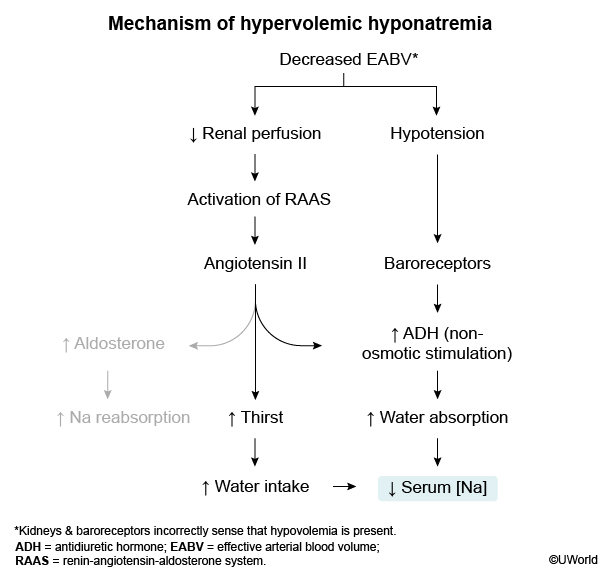Hyponatremia
Article Sections
Introduction
Hyponatremia (serum sodium concentration <135 mEq/L) is a common electrolyte disorder that reflects an excess of water relative to sodium in the body.
Pathophysiology
Because hyponatremia results from various disturbances in water and sodium balance, understanding basic principles of the regulation of water and sodium balance is crucial.
Regulation of water balance- Antidiuretic hormone (ADH), also known as vasopressin, is the primary regulator of water balance. It is synthesized in the hypothalamus and released from the posterior pituitary gland. ADH acts on the kidneys to increase water reabsorption in the collecting ducts by increasing water permeability (aquaporin channels). ADH secretion is controlled by both:
- osmoreceptors (respond to serum osmolality) and
- baroreceptors (respond to blood volume and pressure).
- For example, ADH is released in response to hyperosmolarity and decreased blood volume/pressure. In cases of significant hypovolemia, the baroreceptor-driven ADH release mechanism can override signals from osmoreceptors (ie, the body attempts to conserve fluid even if doing so leads to a temporary imbalance in blood osmolarity).
Continue Learning with UWorld
Get the full Hyponatremia article plus rich visuals, real-world cases, and in-depth insights from medical experts, all available through the UWorld Medical Library.
Figures

Figure 1

Figure 2

Figure 3
Tables
Table 1
Table 2